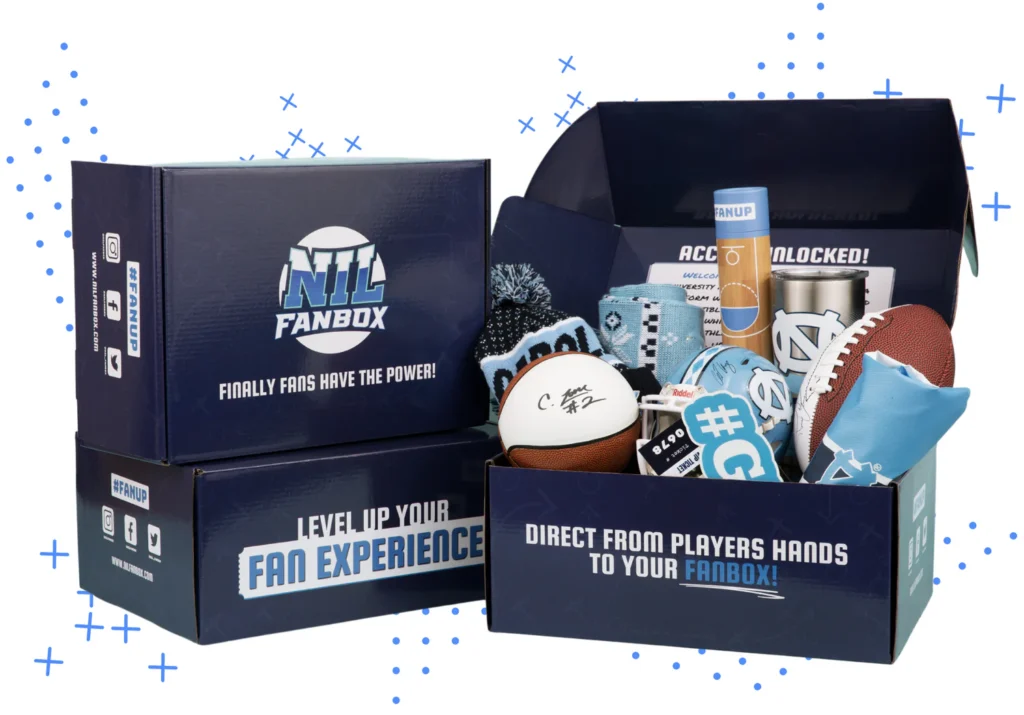On July 1st, 2021, college and high school sports changed drastically. The NCAA passed the NIL policy, allowing student-athletes to profit from their Name-Image-Likeness. Four years later, players like Travis Hunter Jr. have an NIL valuation of $5.2 million while playing for the University of Colorado Buffaloes.
This has created opportunities for student-athletes to truly be appreciated. It has also provided many sports enthusiasts to contribute their own solutions to make the college landscape feel more connected.
Sports enthusiast Khalil Thomas, a graduate of Xavier University of Louisiana, was among the few who contemplated better ways to connect fans with college sports. Reminiscing on a time when he stood in countless lines waiting for his favorite athlete to sign his jersey, he felt compelled to create a better way for fans to acquire authentic memorabilia.

Thus, NIL FanBox was created.
He soon connected with Terry Comer, a Morris Brown graduate and veteran business marketer, and together they developed a product that includes three to five signed collectibles, exclusive player merch, a FanBox golden ticket, and more.
We recently spoke with Thomas, where he broke down the NIL landscape and the inner workings of the NIL FanBox.
Transcript edited.
QG: Can you give me a brief history and background of NIL and how it benefits collegiate athletes, and is it applicable to high school athletes as well?
KT: Yes, NIL extends to high school athletes in some states, like Georgia. Going back in time, when I was in college, student-athletes couldn’t get paid, even though the schools were making billions off of them. The athletes only got a free education. Around two and a half to three years ago, NIL was passed, allowing athletes to be compensated. Initially, it was a bit chaotic, and people were unsure how it would work. Would big corporate sponsors be involved? How would the money be distributed? But I think overall, it’s been a great development. These kids should be getting paid, especially when you look at events like the national championship game and the college football playoff, where everyone is making money, and the athletes should be a part of that. The NIL is still in its early stages, but it’s definitely a step in the right direction.
QG: Can you tell me more about your NIL FanBox, and how it works as both a memorabilia product and a revenue stream?
KT: My business partner Terry and I were both huge sports card fans as kids, and we wanted to create something that would evoke that same excitement and connect fans to the athletes and programs they love. That’s how we came up with the NIL FanBox. It’s a box filled with autographed collectibles from your favorite athletes at your chosen school, like signed basketball court pieces, baseballs, trading cards, posters, prints, and more.
We also do dynamic memorabilia, which means each item has a QR code linked to an interview with the athlete about that specific moment. For example, we got this print of Vince Young winning the national championship. There’s a QR code in the lower corner. So when we got him to sign that piece, we also did an interview with him and we asked him about that moment.
QG: How do you organize and manage all the merchandise, from signing to putting together the boxes and shipping them out?
KT: It’s no easy task! Fortunately, my business partner has an industrial engineering background, so he handles a lot of the system design. We go through licensing for each athlete’s images, design the products, then get those products shipped to the school. We organize signing days with the athletes and capture content. Once the signed items are collected, they’re shipped to a warehouse where the team assembles the boxes. When an order comes in, they ship it out. There’s a lot involved, but when you see the joy on people’s faces as they open their boxes, it makes it all worth it. It’s about creating an experience that validates and celebrates fans’ passion.
QG: What does the roster of athletes look like? Is it based on schools, specific grade levels, or their success?
KT: The roster is driven by the schools we partner with. Currently, we’re working with North Carolina, Texas, and Ohio State. We work with athletes from across various sports and genders at those schools. For example, at North Carolina, we’ve worked with the women’s field hockey and volleyball teams, along with football and basketball. We make sure 40% of the athletes we work with are female to ensure representation. We create a list of athletes, then talk to them, get them signed up, and have them sign the merchandise and share their stories.
QG: When it comes to creating the content or the merchandise for the NIL Fan Box, is that all done in-house?
KT: Yes, we handle everything in-house. We design everything, from posters and prints to packaging. Our in-house design team works on creating the visual direction for each piece. It’s a lot of work, but it’s worth it. We want everything to feel unique for each player, team, or college, which makes it a very intricate process.
QG: What exactly is included in the boxes?
KT: Inside the box, you’ll find autographed posters, prints, trading cards, autographed basketball pieces, signed baseballs, and even special licensed items like a drip cup we did with R.J. Davis. We also include trophy cases and other cool memorabilia. There’s a wide range of items that can be included in any given box.

QG: What’s your overall goal for the schools you’re working with? Do you want to work with all colleges, or do you have a specific focus?
KT: Big picture, we want to work with every college. Every fan should have the opportunity to connect with their favorite athletes through the NIL FanBox. It’s an evolution of the fan experience, bridging the gap between game day and home. We aim to work more closely with athletic departments to offer a comprehensive solution that spans different channels within each school. Ultimately, we want to make sure the fan experience is the focus, so it’s not just about selling memorabilia but creating an unforgettable fan experience.
QG: Do you change the creative direction each year or season?
KT: Yes, we change the designs every year. While the outside of the box stays the same for now, the inside, including the posters and prints, evolves each season. We treat each box like a time capsule of the season. It’s all about telling the story of that particular year, and we make sure to weave that theme throughout the design and items inside. Each season gets its own unique treatment, which helps keep things fresh for the fans.
QG: What would you like to expand inside the box that you don’t currently have?
KT: That’s a great question. While the box is already pretty robust, we’re always looking for ways to improve the fan experience. We’ve considered adding items like mini helmets or basketballs, and even bobblehead dolls. We know that kids love to take things out of the box, so there’s a lot of potential for adding fun items. There’s a lot of opportunities, and we’re constantly innovating to make each unboxing experience feel fresh and new every year.
Check out the full interview.



